Spain holds the largest Gothic cathedral in the world, a mosque turned church that defines architectural fusion, and a basilica that’s been under construction for over 140 years. These sacred spaces aren’t just places of worship—they’re time capsules of conquest, artistry, and ambition that shaped a nation. Here’s a list of 17 Spanish cathedrals that showcase centuries of architectural evolution and cultural transformation, each offering its own window into the country’s complex spiritual and political history.
Seville Cathedral
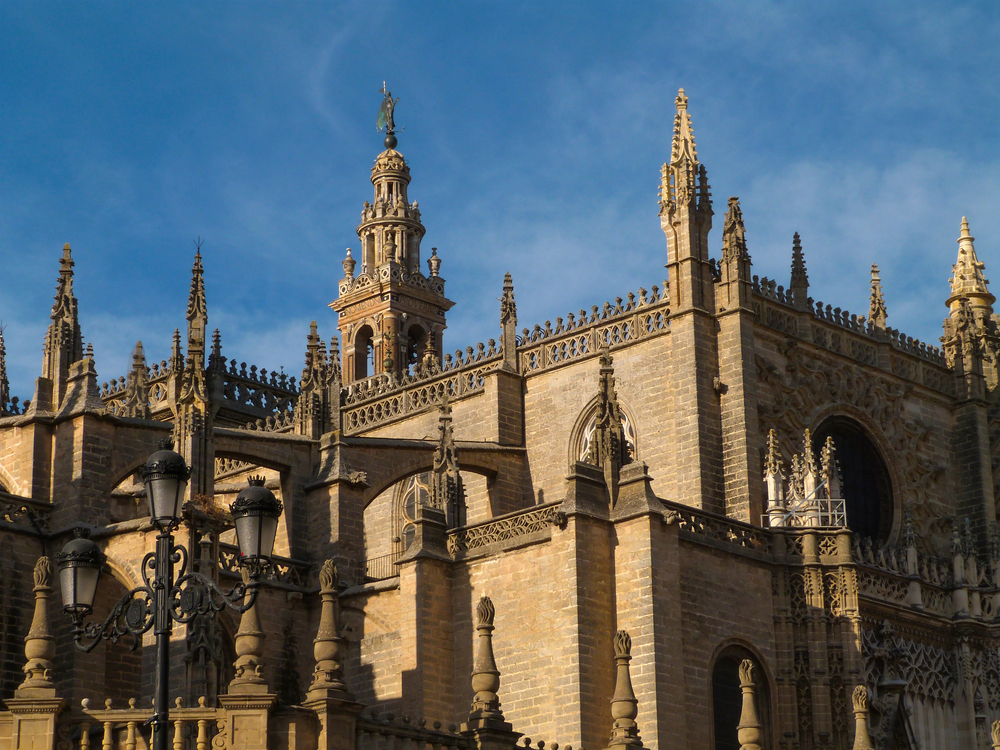
The builders declared their intention boldly: construct something so magnificent that future generations would think them mad. They succeeded. This Gothic giant claims the title of world’s largest cathedral by volume, built deliberately on the ruins of a 12th-century mosque to announce Christian triumph over Moorish rule.
The famous Giralda tower—originally a minaret—still watches over the city with its weather vane crown. Inside, Christopher Columbus rests in an elaborate tomb carried by kings, while the world’s largest altarpiece stretches toward soaring vaulted ceilings. The smell of centuries-old incense seems to hang permanently in the air here.
León Cathedral
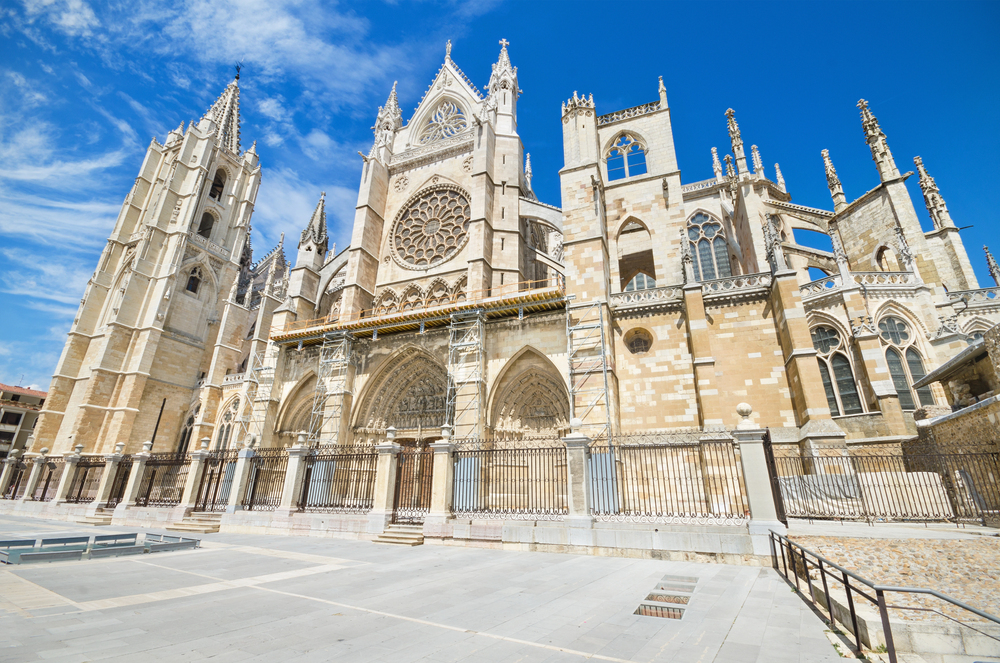
Those windows. Pure magic.
León’s claim to fame rests in 134 stained-glass windows spanning five centuries, creating what many consider Europe’s finest collection alongside Chartres Cathedral. The 1,764 square meters of original medieval glass transform the interior into a kaleidoscope of colored light that shifts throughout the day as the sun moves across the sky.
Still, this Gothic masterpiece nearly collapsed under its own beauty. The thin walls supporting all that glass required ingenious engineering solutions. Hidden flying buttresses, sometimes called the ‘House of Light’, tucked into cloisters keep everything standing—a precarious balance between architectural ambition and structural reality.
Burgos Cathedral
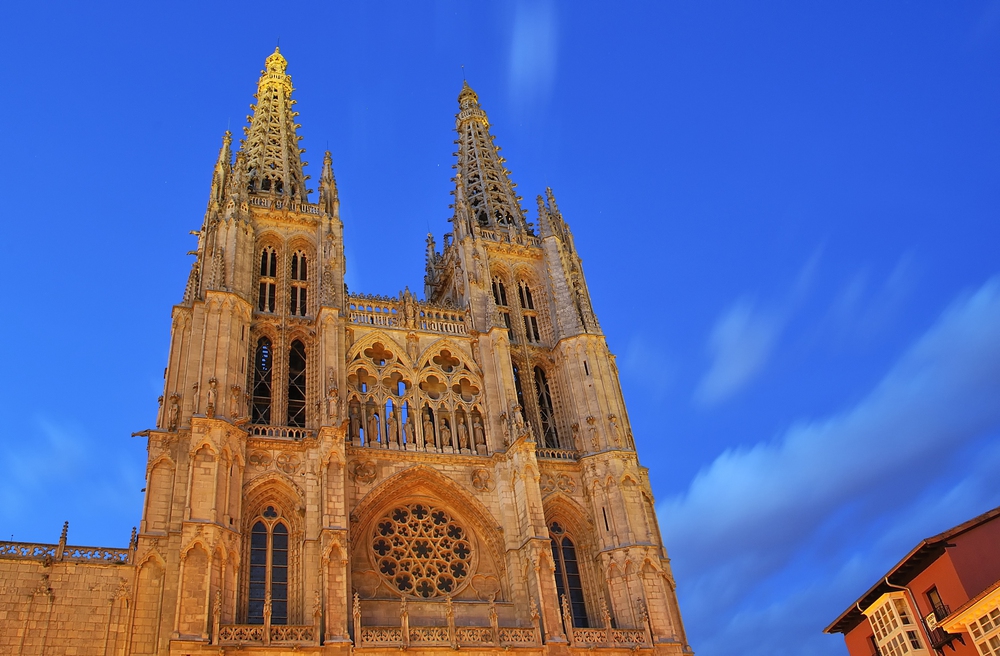
Spain’s first UNESCO World Heritage cathedral stands proud in this quiet northern city. The Gothic spires pierce the sky like stone prayers, while inside, El Cid and his wife Doña Jimena rest beneath the central dome.
Construction began in 1221 under royal patronage, stretching across three centuries. The result mixes French Gothic influences with distinctly Spanish flair. Look for the famous “Papamoscas”—an 18th-century automaton that emerges hourly to ring bells, delighting visitors with mechanical precision that still works after all these years.
Santiago de Compostela Cathedral
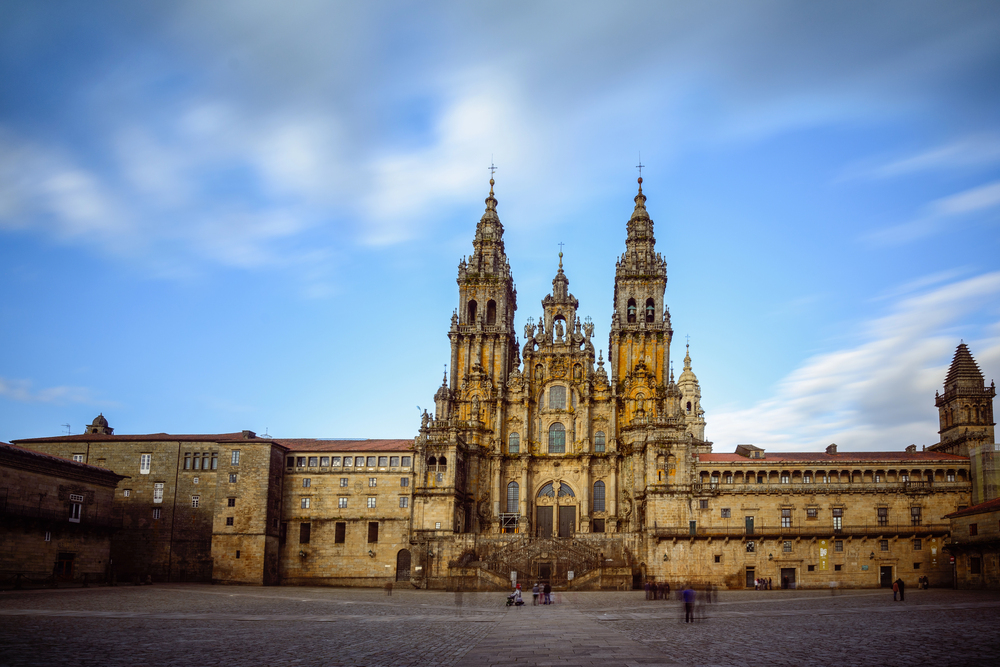
Every year, thousands of pilgrims complete their journey at this Romanesque shrine, the final destination of the Camino de Santiago. Behind the baroque Obradoiro facade lies the supposed tomb of Saint James, drawing faithful from across the globe since medieval times.
The cathedral hosts one of Christianity’s most dramatic rituals: the massive botafumeiro incense burner swinging across the transept on special occasions. Eight men operate the pulley system that sends this silver censer flying in wide arcs above the congregation—and yes, it has occasionally broken free and crashed into the walls.
Toledo Cathedral

— Photo by Changered
This massive Gothic structure dominates Toledo’s skyline, its asymmetrical towers creating an oddly charming silhouette. Built on a former mosque site, the cathedral took nearly three centuries to complete, resulting in architectural layers that tell Spain’s religious evolution.
The transparent, a baroque skylight carved directly through the vault, floods the altar with natural illumination. The choir stalls showcase some of Europe’s finest woodcarving—intricate scenes that reward close examination.
Córdoba Mosque-Cathedral
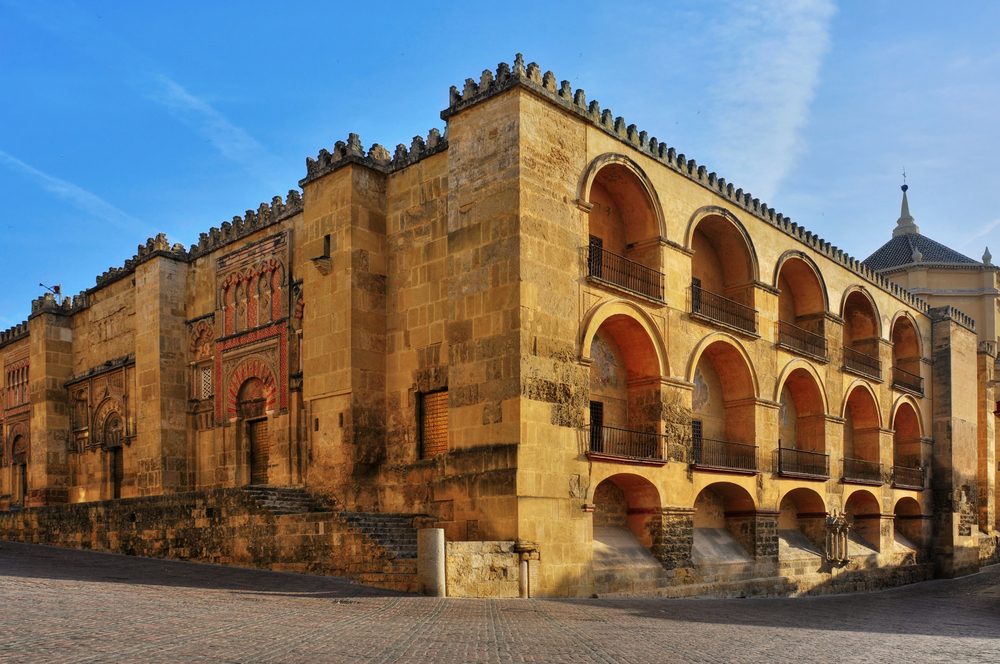
Perhaps the world’s most architecturally confused building, this site embodies Spain’s complex religious history. What began as a Visigothic church became a grand mosque under Moorish rule, then transformed into a cathedral after Christian reconquest. Talk about an identity crisis.
The result is breathtaking cognitive dissonance. Hundreds of horseshoe arches in red and white stripes create a forest of columns, while a Renaissance cathedral nave sits awkwardly in the center. Some critics call it intrusive architecture. Others see cultural synthesis at its finest.
Granada Cathedral
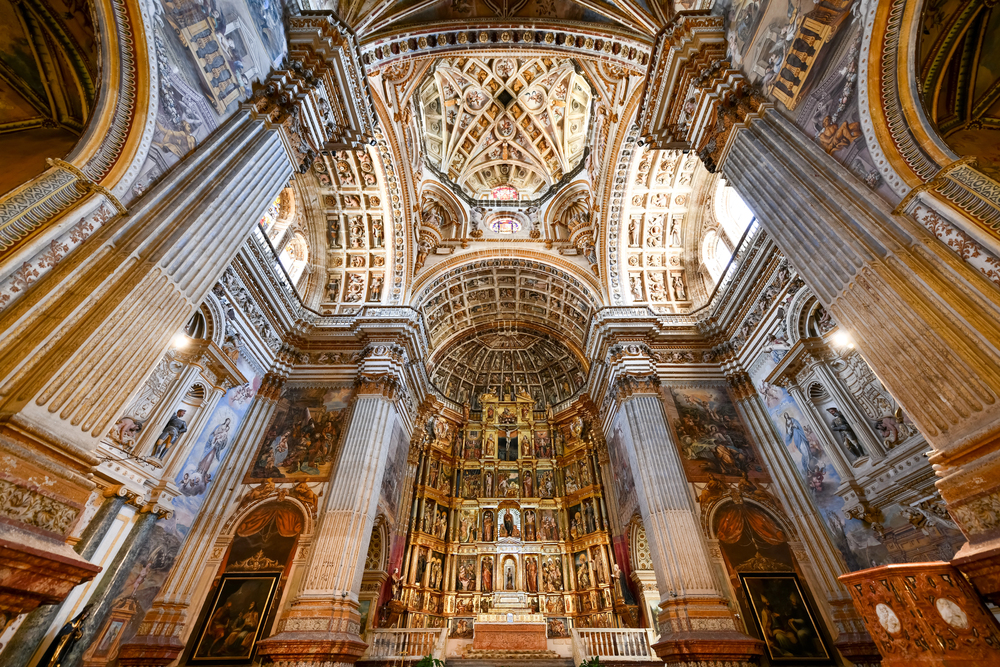
— Photo by demerzel21
This Renaissance giant took 180 years to build, spanning architectural fashions from Gothic foundations to baroque flourishes. Construction delays included the Black Death, which explains why multiple generations of the same families worked on its completion.
Built atop Granada’s former grand mosque, the cathedral symbolized Christian victory over the last Moorish stronghold. Two massive 18th-century organs dominate the interior, their gilded pipes reaching toward painted vaults that seem to glow with celestial light.
Cuenca Cathedral
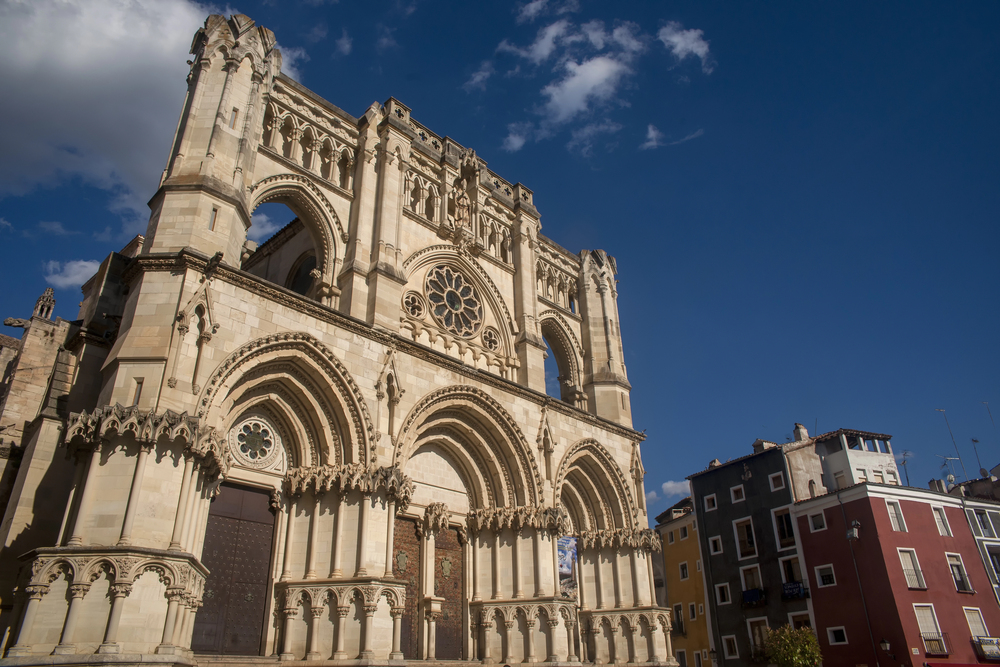
This Gothic cathedral perches dramatically on the edge of Cuenca’s famous hanging houses, creating one of Spain’s most striking urban landscapes. Built between the 12th and 13th centuries, it represents one of the earliest examples of Gothic architecture arriving in central Spain.
The facade combines Norman-influenced early Gothic with later additions that span centuries of architectural evolution. Inside, the cathedral houses an impressive collection of religious art, including works by El Greco. The building’s precarious position on the cliff edge adds an element of architectural drama that few other Spanish cathedrals can match.
Salamanca Old Cathedral
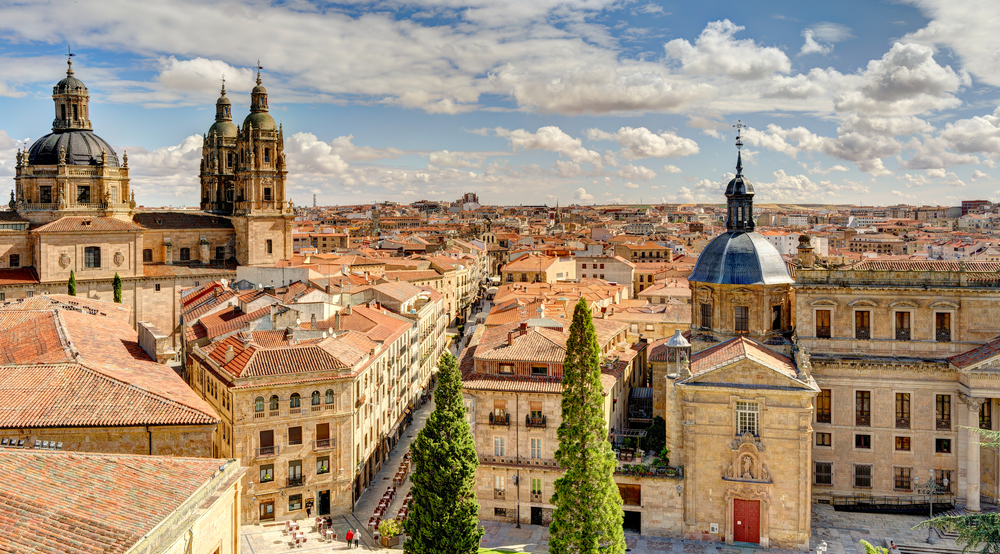
— Photo by mehdi33300
Salamanca offers a unique architectural double feature: two cathedrals built side by side across different centuries. The older structure showcases late Romanesque style with pointed arches that hint at Gothic innovations to come.
The stunning Torre del Gallo dome creates an almost Byzantine atmosphere at the crossing. The newer cathedral next door spans 200 years of construction, mixing Gothic, Renaissance, and baroque elements. Don’t miss the carved astronaut—added during 1990s restoration as a contemporary touch following ancient tradition.
Palma Cathedral

This Gothic giant overlooks Palma Bay with an almost fortress-like presence. Built on a former mosque site, construction spanned four centuries, allowing various architectural styles to leave their mark.
Gaudí himself worked on restoration in 1901, contributing a striking baldachin above the altar. More recently, contemporary artist Miguel Barceló created a ceramic installation in St. Peter’s Chapel that resembles an underwater grotto—bringing 21st-century art into medieval sacred space. The contrast is jarring and beautiful in equal measure.
Oviedo Cathedral
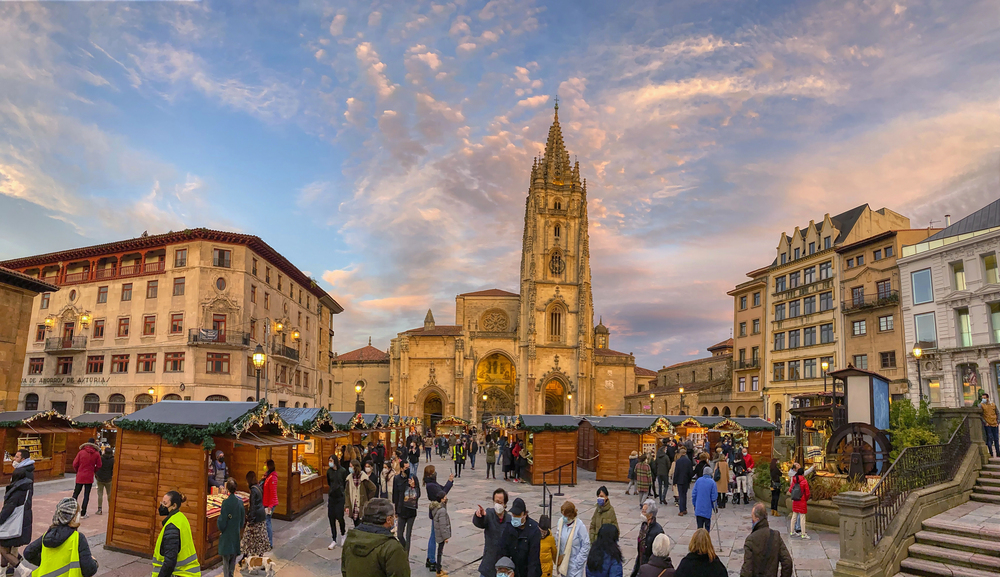
— Photo by StockPhotoAstur
The Asturian pre-Romanesque style makes Oviedo’s cathedral architecturally unique in Spain. This early medieval aesthetic predates both Romanesque and Gothic movements, showcasing indigenous building traditions that developed during Christian resistance to Moorish expansion.
The Holy Chamber houses some of Christianity’s most precious relics, including what tradition claims is the Sudarium of Christ. Even so, the real treasure is the architectural timeline—from pre-Romanesque foundations through Gothic expansions to baroque additions.
Astorga Cathedral
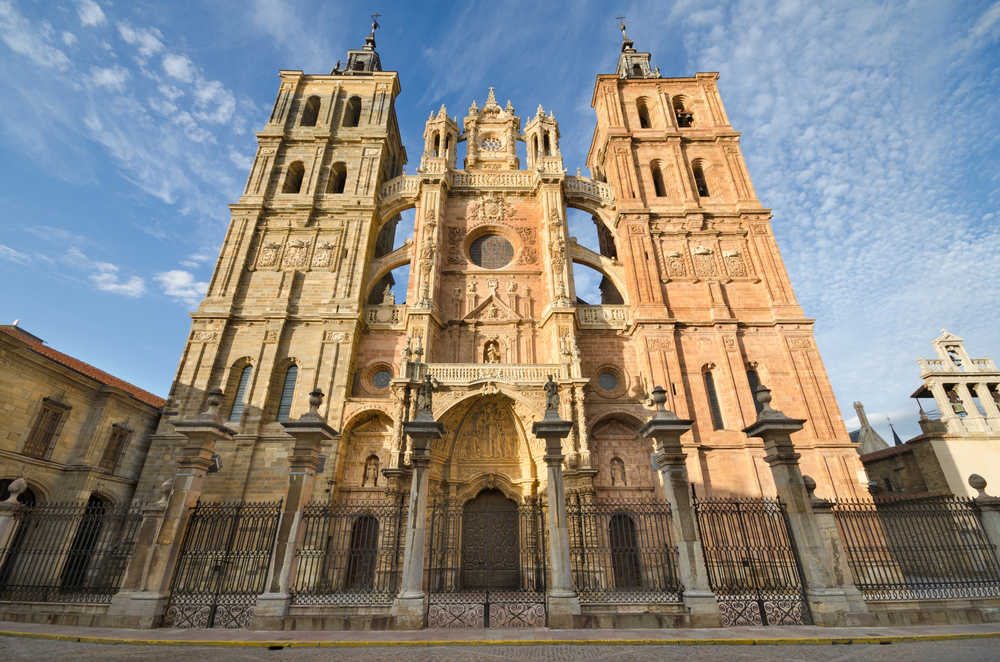
Antonio Gaudí designed the neighboring episcopal palace, but the cathedral itself represents five centuries of architectural evolution. Gothic foundations support Renaissance additions, while baroque elements complete the stylistic mixture.
The facade combines Gothic and baroque influences in ways that shouldn’t work but somehow do. Inside, the altarpiece stretches impressively toward ribbed vaulting, while side chapels showcase regional artistic traditions spanning multiple centuries.
Segovia Cathedral
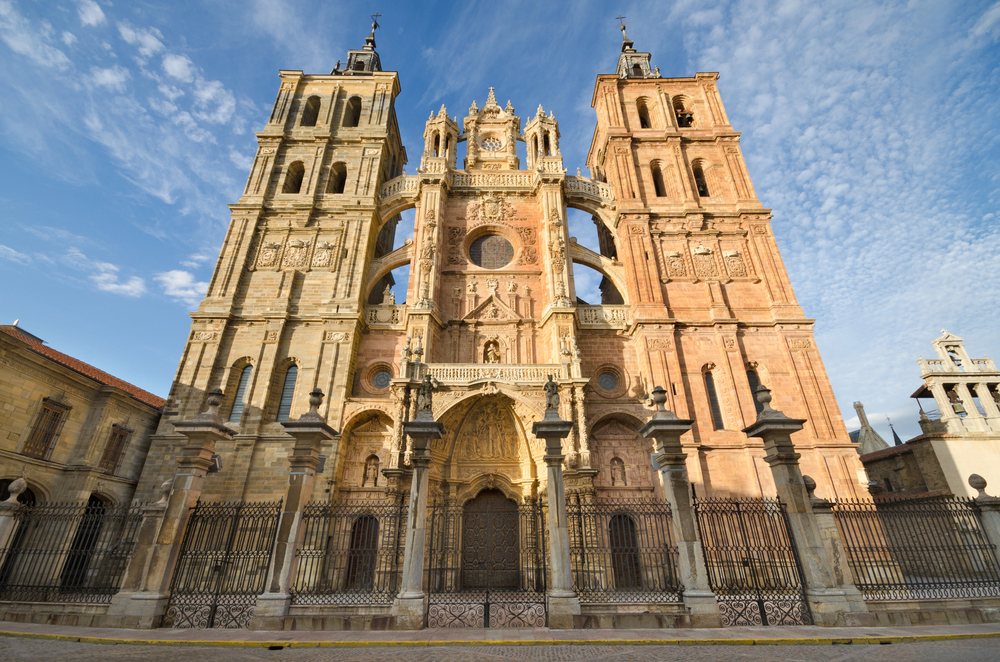
Known as the “Lady of Cathedrals” for her elegant proportions. This late Gothic structure was among the last built in that style. Construction began in 1525, long after Renaissance ideas had spread through Europe, yet Segovia remained faithful to Gothic traditions.
The tower reaches 90 meters into the Castilian sky, making it one of Spain’s tallest cathedral spires. Stone tracery creates delicate patterns against blue skies, while the interior maintains Gothic verticality that draws eyes heavenward.
Girona Cathedral
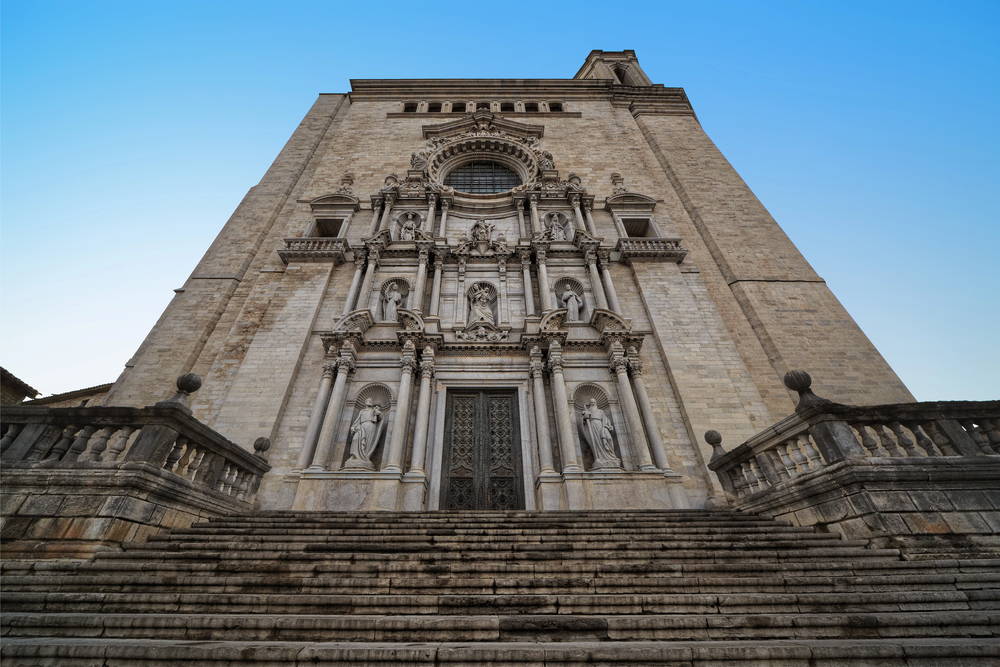
This Gothic cathedral boasts the widest nave in Christendom—23 meters of uninterrupted space that creates a sense of overwhelming scale. The single nave design was controversial in its time but produces an undeniably dramatic effect.
The famous “Tapestry of Creation” displays 11th-century Romanesque needlework depicting biblical scenes. The cathedral steps featured prominently in Game of Thrones, bringing medieval architecture to modern popular culture.
Avila Cathedral
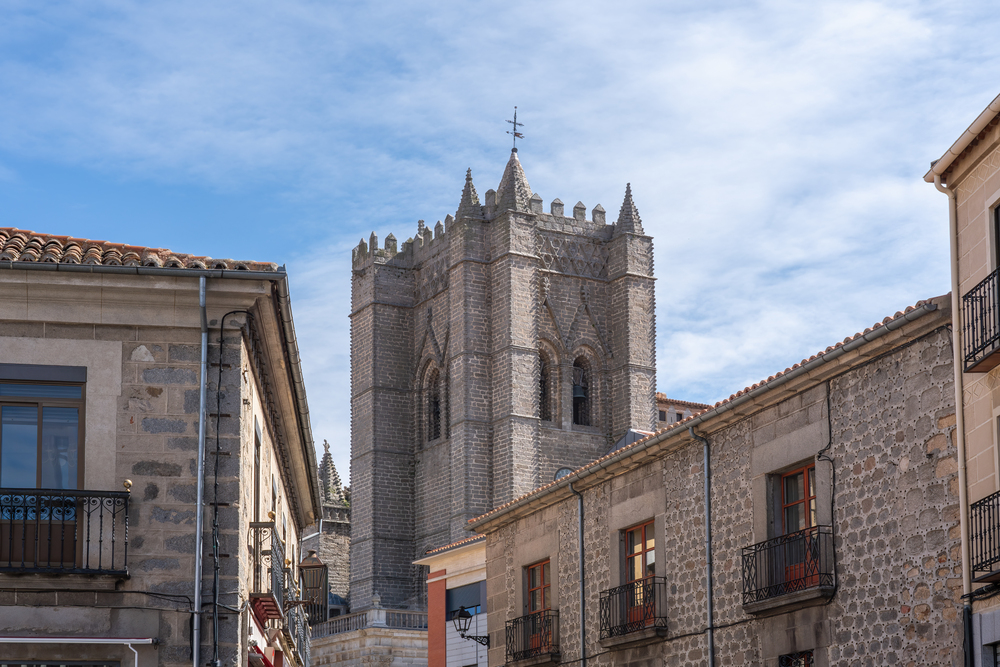
Built directly into the city’s defensive walls, Avila Cathedral functions as both spiritual center and military fortification. The apse forms part of the medieval city defenses, creating a unique integration of religious and secular architecture.
Inside, red and white granite creates striking visual patterns, while the carved choir stalls showcase 15th-century woodworking at its finest. The tomb of El Tostado features intricate stone carving that rewards careful examination—if you can get close enough through the crowds.
Almudena Cathedral
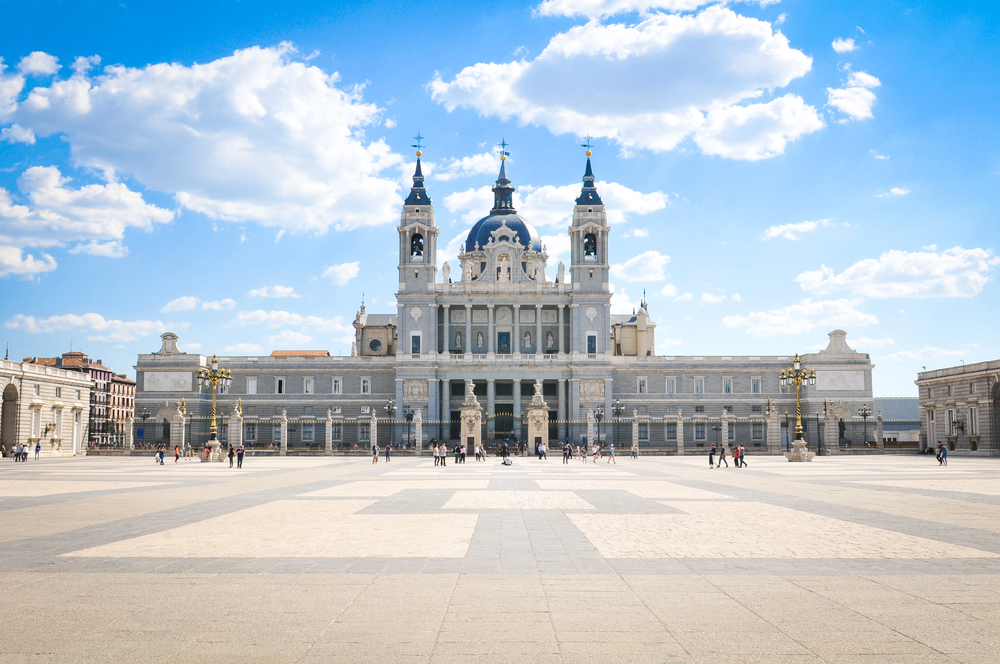
Madrid’s cathedral represents modern cathedral construction, completed only in 1993 after more than a century of intermittent building. The neoclassical exterior gives way to surprisingly contemporary interior spaces.
The crypt houses Spanish royal tombs, connecting modern Madrid to its monarchical past. While architecturally eclectic—mixing neo-Gothic, neo-Romanesque, and neoclassical elements—the cathedral serves as the seat of Madrid’s archdiocese and venue for royal ceremonies.
Zamora Cathedral
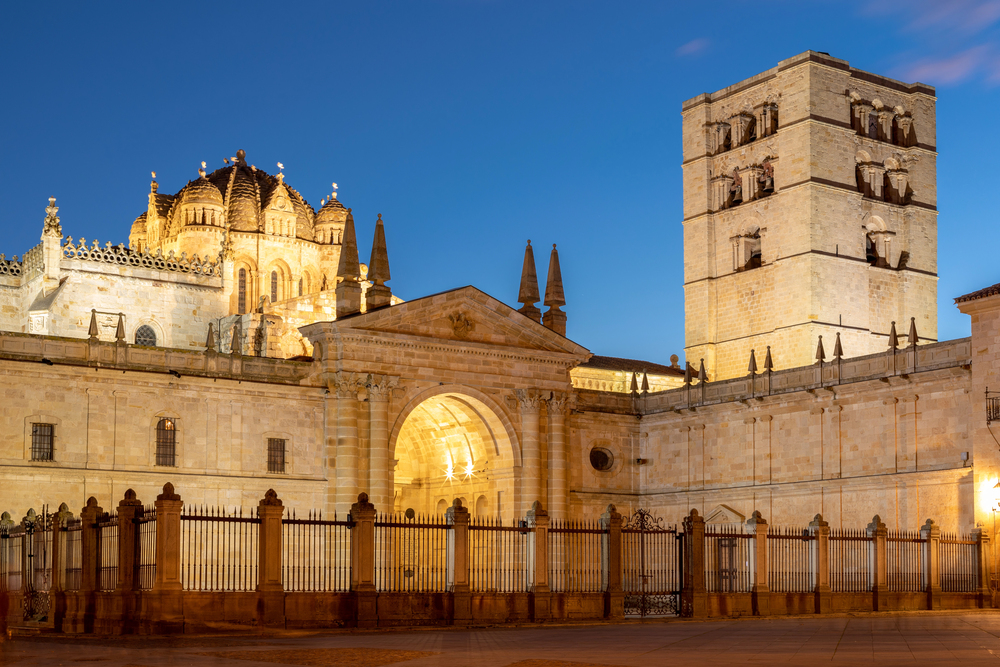
This Romanesque gem survives largely unchanged from the 12th century, offering insight into pre-Gothic sacred architecture. The distinctive dome features stone scales that create an almost organic appearance—unusual in Spanish Romanesque design.
Byzantine influences appear throughout, suggesting cultural connections beyond typical Western European architectural traditions. So the cathedral’s relatively modest size creates intimate spaces that contrast sharply with later Gothic enormity.
Sacred spaces that shaped a nation
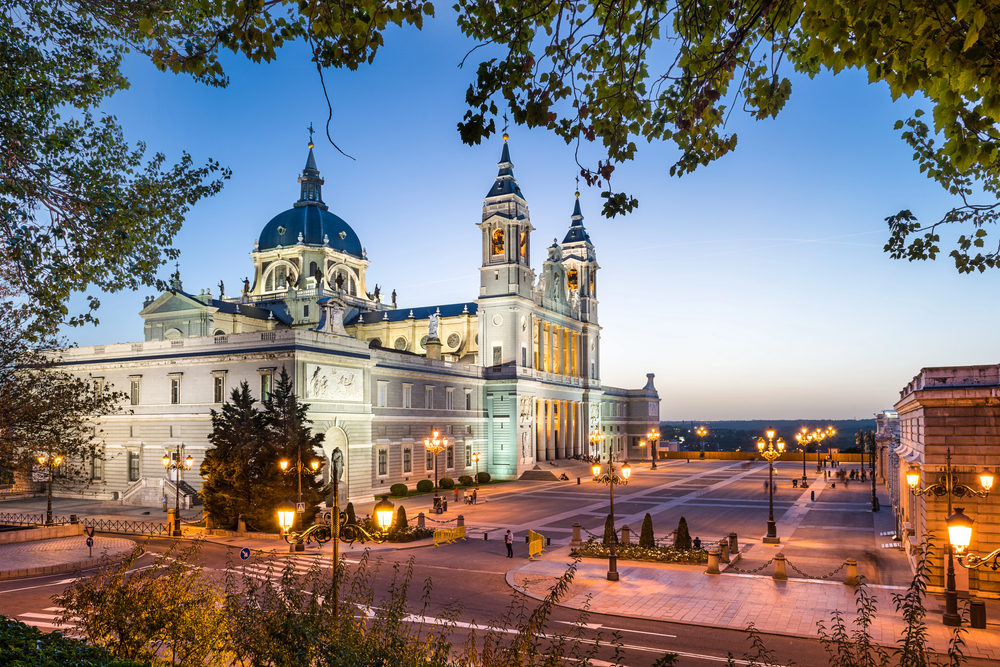
These cathedrals are like living history books, showcasing Spain’s journey from the Visigothic kingdom, through the Moorish conquest, the Christian reconquest, and into its imperial expansion and modern nationhood. Each stone is a storyteller, revealing tales of faith, power, artistic dreams, and cultural blending that still resonate in the vibrant identity of contemporary Spain.
More from Travel Pug

- 20 Best Beach Towns in the Carolinas
- 13 Destinations Where Tourists Regularly Regret Their Trip
- 20 Things You Actually Get in First Class
- 20 Small Airports With Aviation Museums
- 20 Places in the U.S. That Are Perfect for a Reset Trip
Like Travel Pug’s content? Follow us on MSN.
